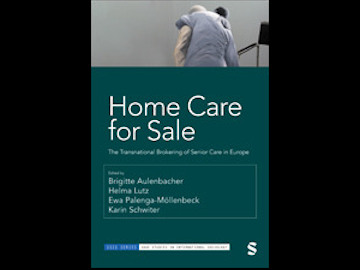Multiple interacting migration patterns in senior care on Europe’s semi-periphery
1. 3. 2024 | Politics

 The book Home Care for Sale. The Transnational Brokering of Senior Care in Europe (Home Care for Sale | SAGE Publications Inc) argues that senior home care provision in Europe has changed profoundly: the rise of brokering agencies has fostered a transnational marketization of live-in care services. The agencies promise affordable care at home that is tailored to the individual needs of seniors. At the same time, care workers contest the often-exploitative labour conditions prevalent in the field. The common trends in live-in care which appear across Europe are: the emergence of new care markets, the transnationalisation of labour, work and politics, the household as a workplace and care workers’ agency in labour disputes and care struggles.
The book Home Care for Sale. The Transnational Brokering of Senior Care in Europe (Home Care for Sale | SAGE Publications Inc) argues that senior home care provision in Europe has changed profoundly: the rise of brokering agencies has fostered a transnational marketization of live-in care services. The agencies promise affordable care at home that is tailored to the individual needs of seniors. At the same time, care workers contest the often-exploitative labour conditions prevalent in the field. The common trends in live-in care which appear across Europe are: the emergence of new care markets, the transnationalisation of labour, work and politics, the household as a workplace and care workers’ agency in labour disputes and care struggles.
The chapter, contributed by Majda Hrženjak and Maja Breznik, Multiple interacting migration patterns in senior care on Europe’s semi-periphery, focuses on care movements in Slovenian senior care against the backdrop of the country’s historical ties with the Western Balkans and its geopolitical location in the Eastern European semi-periphery, understood as a hybrid position between the European core and periphery. The authors argue that semi-peripheral countries act as complex nodes of care migration where emigration, transit and immigration interact. Poor working conditions in the semi-peripheral welfare state contribute to the care drain of local care workers to neighbouring core countries, where they find a job in irregular or quasi-regular care markets supported by public funding. Simultaneously, it maintains cost containment by filling the care deficit with migrant care workers from peripheral former Yugoslav countries, where the pool of available care jobs is scarce and the working conditions even worse. Semi-peripheral countries compete with core countries for care workers from the periphery, which creates new dimensions of transnational care mobility.




